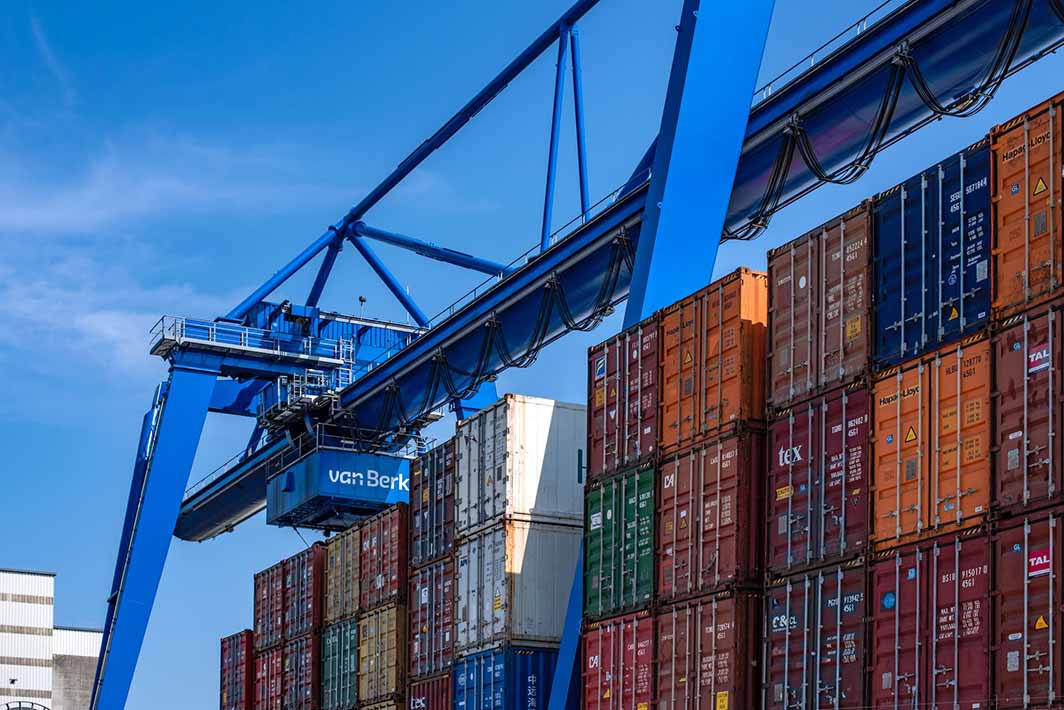Last Modified: May 25th, 2023
7 min read

The global supply chain is constantly changing and evolving, and staying on top of the latest trends can be a challenge. With new technologies emerging at an ever-increasing rate, it’s important to stay ahead of the curve when it comes to understanding how these developments will affect your business. In this article, we’ll take a look at 14 key supply chain trends that you should be aware of in 2023.
From AI-enabled forecasting tools to blockchain-based tracking systems, we’ll explore how cutting edge technology is transforming the way goods are produced, distributed and tracked around the world. We’ll also discuss some other major changes happening in the industry – from sustainability initiatives to rising consumer expectations – so that you can prepare your business for what lies ahead.
Sustainability
The need for businesses to be sustainable is clearer than ever before, as communities and supply chains are increasingly facing the effects of extreme weather events. Companies must now reduce their supply chain contributions to global warming and adapt their supply chains in order to survive these potential disasters. Governments are implementing regulations such as the SEC’s disclosure of GHG emissions in financial statements, the White House’s proposed Federal Supplier Climate Risks and Resilience Rule, and the EU’s forthcoming Corporate Sustainability Reporting Directive. In order to meet these regulatory requirements and build a sustainable supply chain, companies must have visibility into their entire supply chain network, as well as access to advanced analytics in order to identify potential risks and become more agile.
Supply Chain Agility
The concept of agility is rapidly becoming the new standard in supply chain operations, as evidenced by the Association of Supply Chain Management’s recent update to its Supply Chain Operations Reference Digital Standard. This shift emphasizes end-to-end visibility, buyer-seller collaboration, and a more agile approach to supply chain management. To achieve this new level of agility, many companies are leveraging microsupply chains, microwarehousing and fulfillment capabilities, and microservices. These components will become essential for businesses to succeed in a rapidly changing environment. As supply chain strategies continue to evolve with the demands of the market, those who are agile and able to adapt quickly will come out on top.
Localized Supplies
In 2023, companies are expected to begin reshoring their supply chains in order to reduce transportation costs and delays, as well as exposure to global geopolitical risks. Many businesses are opting for multiple-source, multi-region strategies in order to avoid single points of failure. This may involve sourcing components closer to home and performing final assembly in the US, or outsourcing certain components to Mexico from Asian suppliers. While sourcing supplies can be expensive and difficult, the long-term savings in terms of transportation costs, delays and geopolitical risks may make such a move worthwhile for many businesses.
However, supply chain agility is becoming increasingly important as the market rapidly changes and evolves. Companies must remain agile and able to quickly adapt in order to remain competitive. This means being open to different types of suppliers, embracing digital transformation, and having a clear strategy for risk management. At the same time, companies must be aware of the hidden risks that come with global supply chains. Even if a company and its suppliers are not global, there is often residual risk from suppliers’ suppliers on distant shores. To protect against this, companies should consider implementing rigorous risk management strategies and using tools such as supplier diversity databases and digital tracking systems to stay informed about potential issues.
Increased Inventory Reserves
In the face of economic difficulties in 2023, companies will need to pay close attention to their inventory reserves as a key financial mechanism for estimating the percent of inventory that won’t be sold. Inventory reserves are forward-looking expenses allocated to the cost of goods on a balance sheet. Companies need to factor in historical inventory patterns and current market conditions to project the percent of goods that won’t be sold, in order to accurately calculate inventory reserves. Additionally, companies should not rely too heavily on stockpiling inventory, as rising storage costs and the cost of financing that inventory may cancel out any potential benefits. Instead, many experts advise refining just-in-time inventory systems with limited and strategic stockpiles, backorder planning and the identification of substitutable products. To keep up to date and agile, companies should also consider investing in inventory management software.
Flexible Contract Integrations
In today’s supply chain climate, having flexible contracts is increasingly important for both buyers and suppliers. Traditional fixed-price contracts can be subject to too much volatility, making them less beneficial in the long run compared to more fluid relationships with smaller blocks of orders. Companies are using digital supply chain techniques to manage the complexity of having multiple suppliers and allowing for the flexibility of changing orders if needed. This could include clauses to cover inflation or other contingencies, as well as pricing adjustments based on market conditions.
Flexible contracts are all about striking a balance between business objectives and being agile enough to adapt when unexpected events occur. Companies must understand their customers, have effective communication with suppliers, and leverage intelligent approaches to contract management in order to make the most of their flexible contracts. This could involve automating more processes, collecting data from multiple sources to gain better visibility, and taking advantage of artificial intelligence analytics for predictive insights.
Increased Ecommerce
Ecommerce has seen a huge surge in recent years due to the pandemic, with both B2C and B2B marketplaces seeing an increase in sales. Consumers have grown accustomed to shopping online and now ecommerce businesses must work to keep up with customers’ expectations of convenience, such as speedy delivery, hassle-free returns and the ability to shop both online and in-store. B2B marketplaces are also growing, with businesses needing to make the transition to digital supply chains in order to keep up with demand. Ecommerce is expected to continue growing over the next few years and companies must be prepared for whatever changes come their way.
Customer-Centricity
The role of the supply chain in customer experience (CX) has become increasingly important as consumers have become more digitally connected to brands. With more than 60% of supply chain leaders investing in CX metrics and customer data analytics, the goal is to improve the supply chain’s ability to sense and respond to what customers want and need. In addition, the development of the D2C model has been a major trend in customer experience, as it offers a hyper-focused, customer-first approach that relies on subscriptions and social media marketing to engage customers more directly. This model allows brands to collect valuable customer data which can then be used to inform their supply chain strategies, helping them to deliver better customer experiences.
Customization
Customization is becoming increasingly important for customers in the current market, and companies must adjust their supply chain models to meet this growing demand. Mass customization combines mass production with customization to provide unique products at low cost, and technologies such as 3D printing can be used to make the final touches on products near the end of production. In addition, microsupply chains can be spun out to optimize custom orders without impacting the primary segments of the supply chain. Finally, order processing can also be segmented for customized products.
Internet of Things (IoT)
The Internet of Things (IoT) is a rapidly expanding network of connected devices and technologies that are transforming the way supply chains operate. With the introduction of advanced 5G cellular networks and Wi-Fi 6 and 7, billions of new IoT connections are being created, allowing for enhanced data collection, processing and analysis. In particular, intelligent edge ecosystems are becoming increasingly important in the decision-making process of supply chain operations.
Cloud-Based Solutions
The cloud is becoming an increasingly popular platform for supply chain software, with MHI forecasting a 40% adoption rate in 2022 and 86% in 2027. Cloud computing is paving the way for several groundbreaking supply chain innovations, such as mesh technology which allows data from multiple systems to be combined into a virtual replica that can streamline decision-making processes. Cloud-based software-as-a-service (SaaS) can also be used to manage storage and compare freight forwarders, making it easier for supply chain managers to keep track of operations, no matter where they are.
Advanced Automation
The labor shortage is a growing issue, prompting many companies to move toward digital transformation by leveraging supply chain robotics and automation. By 2022, the adoption of these technologies is expected to triple compared to current levels. Autonomous operations are the desired outcome, allowing for integrated, frictionless, customer-centric supply chain functions that enable cognitive and touchless operations. Advanced order management applications and autonomous equipment, such as drones, are helping to automate the manual processes that typically slow down supply chains. The result is a more agile and responsive environment which can quickly adapt to external disruptions.
Increased Visibility
The cloud, IoT, and other advanced technologies have enabled increased visibility into the supply chain. Digital twins and control towers provide a virtual replica of supply chain assets based on data from real-time sources, including internal departments and external sources. This allows cross-functional teams to formulate an orchestrated response to observed events, variables and desired outcomes in order to meet customer expectations. Scenario planning is a powerful tool that uses the data from digital twins and control towers to test various possible events, variables and outcomes. Despite the advantages of increased visibility afforded by technology, most companies still have progress to make in achieving supply chain visibility beyond Tier 1 suppliers. It is only by addressing this barrier that companies can access the full potential of digital twins and control towers.
Improved Forecasting
Advanced demand forecasting is essential to today’s volatile markets, as it enables companies to accurately predict supply and demand in a rapidly changing environment. Traditional forecasting techniques based on historical sales data are no longer sufficient. Advanced demand forecasting combines greater visibility with analytics to produce more detailed and accurate predictions over the long, medium and short terms. Companies can also adjust to fluctuations in the input factors that influence demand, such as changes in the weather or additional advertising. This not only increases accuracy of forecasting and planning alignment but also allows companies better anticipate changes in demand and adjust accordingly. Utilizing advanced demand forecasting will help companies keep their supply chains running smoothly and efficiently while avoiding costly inventory write-downs.
AI and Machine Learning
AI and machine learning are set to revolutionize the supply chain industry in the coming years, with an expected 73% of companies incorporating them within their operations over the next five years. Companies have already started to leverage AI’s predictive capabilities to forecast demand, but are yet to fully utilize its potential. AI can autonomously analyze data and recommend optimal performance actions, as well as identify weather disasters and how they might affect the supply chain. This technology could be used to activate backup plans or enable self-driving vehicles in warehouses to avoid accidents.
Supply Chain Trends with NetSuite for 2023 and Beyond
The adoption of advanced automation, increased visibility and improved forecasting technologies are essential for companies to remain competitive in today’s volatile markets. By leveraging the power of AI and machine learning, businesses can increase accuracy in their demand forecasting while autonomously analyzing data to recommend optimal performance actions. Companies that make use of these tools will be able to stay ahead of changes in supply and demand, allowing them to maintain a more efficient and agile supply chain which is better prepared for external disruptions.
With so many benefits on offer from digital transformation initiatives such as robotics, cloud computing and analytics, it’s no wonder why more organizations are turning towards technology-driven solutions when looking at optimizing their operations.
Serge is a Managing Partner and the head of sales and business development.
Published on: May 5, 2023
